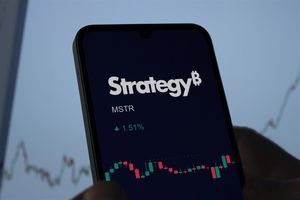
Recent large-scale interdictions of illicit gold and silver shipments across the globe are sending significant ripples through regional precious metal markets. These enforcement successes, from the bustling airports of Hong Kong and India to the remote mining regions of Brazil, highlight the persistent challenge of illegal trade driven by price differentials, import duties, and soaring global demand. While the immediate impact on local prices can be complex and nuanced, these busts invariably disrupt illicit supply chains, potentially supporting legitimate market prices and reshaping the competitive landscape for legal precious metal dealers and miners.
A Surge in Seizures: Unpacking Recent Gold and Silver Interdictions
The past year has witnessed a marked increase in the scale and frequency of gold and silver smuggling busts, signaling a global crackdown on illicit precious metal trade. These operations reveal sophisticated smuggling networks and underscore the significant financial incentives driving these activities.
In India, the fiscal year 2023-24 saw a record-breaking 4,972 kg of gold seized across 6,599 cases, although seizures in FY25 have since halved to 2,600 kg. India's insatiable demand for gold, coupled with significant import duties, continues to make it a prime target and hub for smugglers. Similarly, Japan experienced an eight-fold surge in gold seizures in the first half of 2024, totaling 937 kg, as smugglers attempted to circumvent the country's 10% import tariffs. A notable incident involved Hong Kong Customs intercepting approximately 145 kg of gold, valued at an estimated $3.3 million USD, concealed in air compressors destined for Japan.
Across the Atlantic, Brazil has also seen significant action, with authorities confiscating over 90 kg of gold, valued at more than $11 million, during a traffic stop. This bust was part of a broader federal effort to combat illegal mining operations in indigenous territories, a problem exacerbated by record-high global gold prices. A 2024 report highlighted the staggering scale of illicit gold trade out of Africa, with an estimated 435 tonnes, worth $31 billion, smuggled in 2022, with a substantial portion reportedly ending up in the United Arab Emirates for processing.
While gold dominates the headlines, silver smuggling has also seen significant interdictions. In Pakistan, customs officials at Jinnah International Airport Karachi intercepted 79.18 kg of silver jewelry, valued at approximately $225,000 USD, originating from Hong Kong. Indian authorities also busted a syndicate in Mumbai, seizing 11.88 kg of gold and an unspecified quantity of silver, demonstrating that both precious metals remain targets for illicit trade, particularly as silver prices have recently surged.
Initial market reactions to these busts are often localized and subtle. While no immediate, drastic shifts in global prices are typically observed after a single bust, the cumulative effect of reduced illicit supply can create a more level playing field for legitimate dealers. Heightened enforcement often leads to increased vigilance, potentially raising the "risk premium" for smugglers and making illicit trade less attractive, thereby nudging some demand towards legal channels. These events also serve as a stark reminder of the underlying drivers of precious metal prices, which are deeply influenced by global economic uncertainty, geopolitical tensions, and central bank policies.
Market Dynamics: Winners and Losers in the Wake of Smuggling Crackdowns
The intensified global crackdown on gold and silver smuggling creates a complex landscape of winners and losers within the precious metals market, primarily by disrupting illicit supply and re-emphasizing the importance of legitimate channels.
Legitimate Mining Companies and Refiners stand to be significant beneficiaries. Companies like Barrick Gold (NYSE: GOLD), Newmont Corporation (NYSE: NEM), and Fresnillo PLC (LSE: FRES) for gold, and Pan American Silver Corp. (NASDAQ: PAAS) or Hecla Mining Company (NYSE: HL) for silver, operate within strict regulatory frameworks, incurring costs associated with ethical sourcing, environmental compliance, and taxation. When large quantities of smuggled, untaxed, and often unethically sourced precious metals flood the market, they depress prices and create unfair competition. Smuggling busts reduce this illicit supply, potentially strengthening demand for legally mined and refined metals, allowing legitimate companies to compete on a more even footing and potentially command better prices for their output.
Authorized Dealers, Jewelers, and Bullion Retailers also stand to gain. In regions like India and Japan, where high import duties incentivize smuggling, legitimate dealers often struggle to compete with the lower prices offered by illicit channels. A reduction in smuggled goods means that consumers are more likely to turn to authorized sellers, boosting sales volumes and improving profit margins for businesses like Titan Company Limited (NSE: TITAN) in India, a major jewelry retailer, or smaller, local bullion dealers. This shift can help clear existing inventories for legal businesses and foster greater trust in the official market.
Conversely, the primary "losers" are the smuggling syndicates and illegal mining operations. The direct financial loss from seized assets is substantial, as evidenced by multi-million dollar busts. Beyond the immediate seizures, increased law enforcement scrutiny and higher operational risks make their illicit activities more difficult and less profitable. This can lead to the dismantling of networks, arrests of key players, and a general disruption of their illicit supply chains. For illegal miners, particularly those operating in environmentally sensitive regions like the Amazon, busts directly impact their ability to extract and sell gold, reducing the flow of illegally sourced metal into the global market.
Indirectly, governments are winners as these busts represent successful enforcement of customs laws and a reduction in lost tax revenue. The long-term impact could also include a strengthening of national economies by promoting legitimate trade and investment in the precious metals sector. However, regions heavily reliant on informal or illicit trade might experience short-term economic adjustments as these channels are disrupted.
Wider Significance: Reshaping the Precious Metals Landscape
The recent surge in gold and silver smuggling busts carries a wider significance that extends beyond immediate financial losses for illicit actors, touching upon broader industry trends, regulatory frameworks, and geopolitical dynamics. These interdictions are not isolated incidents but rather critical indicators of evolving market conditions and concerted efforts to formalize the global precious metals trade.
Firstly, these busts underscore a significant broader industry trend: the increasing global demand for precious metals, particularly gold, as a safe-haven asset amidst economic uncertainties and geopolitical tensions. This heightened demand, coupled with varying import duties and taxes across jurisdictions, creates lucrative arbitrage opportunities that fuel smuggling. The busts reveal that while demand for physical metal remains robust, a substantial portion of this demand is still being met through illicit channels, challenging the transparency and integrity of the global supply chain. For instance, the large volumes of gold reportedly smuggled out of Africa highlight issues of illicit mining, conflict minerals, and weak governance in source countries, posing significant challenges for responsible sourcing initiatives championed by organizations and legitimate refiners.
The ripple effects on competitors and partners are multifaceted. For legitimate mining companies and refiners, reduced illicit supply can lead to a more competitive and fairer market environment. However, it also places greater pressure on these entities to meet demand through legal means, potentially encouraging increased exploration and production. For legitimate jewelers and bullion dealers, particularly in high-duty regions, the busts offer a chance to reclaim market share from the informal economy, though they may also need to adapt to potentially higher input costs if the illicit supply was significantly depressing local prices.
Regulatory and policy implications are profound. Large-scale busts often prompt governments to re-evaluate their customs duties and trade policies. India's decision to slash customs duties on gold and silver from 15% to 6% after a period of high seizures is a prime example. Such policy adjustments aim to reduce the incentive for smuggling, boost legitimate trade, and help clear inventories for legal businesses, ultimately impacting local prices more directly than individual busts. These events also highlight the need for enhanced international cooperation among law enforcement agencies to track and dismantle transnational smuggling networks.
Historical precedents show that smuggling of precious metals is not new, often intensifying during periods of economic instability or high commodity prices. During various gold rushes and periods of stringent capital controls, illicit trade flourished. Comparisons can be drawn to drug trafficking or diamond smuggling, where large interdictions, while impactful, rarely eradicate the problem entirely but rather force adaptations in smuggling methods and routes. The persistence of smuggling, despite significant busts, suggests that as long as there are substantial price differentials and regulatory loopholes, illicit trade will continue to seek new avenues.
Ultimately, these busts are a testament to the ongoing struggle between illicit trade and efforts to ensure transparency and legality in the global precious metals market, pushing industry stakeholders and regulators towards more robust and coordinated strategies.
What Comes Next: Navigating the Evolving Precious Metals Landscape
The aftermath of significant gold and silver smuggling busts sets in motion a series of short-term and long-term possibilities, forcing market participants to consider strategic pivots and anticipate emerging opportunities and challenges.
In the short-term, we can expect continued heightened vigilance from customs and law enforcement agencies globally. This increased scrutiny will likely translate into more frequent, albeit perhaps smaller, interdictions as smugglers adapt their tactics, potentially shifting to less detectable methods or routes. For legitimate businesses, this period could offer a temporary reprieve from illicit competition, potentially leading to a slight uptick in demand for legally sourced metals and a stabilization or modest increase in local prices where illicit supply previously depressed them. However, it also means that the supply chain for all precious metals will be under closer examination, potentially leading to stricter compliance requirements even for legitimate operators.
Looking at the long-term possibilities, the sustained pressure on smuggling networks could lead to a gradual formalization of precious metal markets in some regions. Governments, having seen the impact of these busts, might be more inclined to fine-tune their import duties and tax structures to reduce arbitrage opportunities, as exemplified by India's duty reductions. This could foster a healthier, more transparent market where legal businesses can thrive without being undercut by untaxed goods. Furthermore, increased international cooperation in intelligence sharing and joint operations could lead to the dismantling of larger, more sophisticated transnational smuggling organizations, fundamentally altering the landscape of illicit trade.
Potential strategic pivots or adaptations will be crucial for various stakeholders. Legitimate refiners and miners might invest further in blockchain-based traceability solutions to prove the ethical and legal provenance of their metals, enhancing consumer trust and meeting increasingly stringent regulatory demands. Jewelers and bullion dealers in affected regions might need to re-evaluate their pricing strategies and marketing efforts to emphasize the value and security of purchasing through official channels. Smugglers, on the other hand, will undoubtedly seek new routes, concealment methods, and digital currencies to facilitate their operations, presenting an ongoing challenge for law enforcement.
Market opportunities could emerge for companies specializing in supply chain security, anti-money laundering (AML) compliance, and forensic analysis of precious metals. The demand for technology that can detect smuggled goods and verify authenticity will likely increase. Conversely, challenges will persist for governments in balancing revenue generation through duties with the need to prevent smuggling, and for industry players in maintaining competitiveness while adhering to ethical sourcing and compliance standards.
Several potential scenarios and outcomes could unfold. In an optimistic scenario, sustained enforcement and adaptive policies lead to a significant reduction in illicit trade, fostering a more transparent and equitable global precious metals market. In a more pessimistic outlook, smugglers become even more sophisticated, finding new ways to circumvent controls, leading to an ongoing cat-and-mouse game with limited long-term impact on the overall volume of illicit trade. A middle ground might see a shift in smuggling patterns and a gradual, but not complete, formalization of markets in key regions.
Comprehensive Wrap-up: A Shifting Tide in Precious Metals
The recent wave of gold and silver smuggling busts represents more than just isolated law enforcement successes; they signal a shifting tide in the global precious metals market, forcing a re-evaluation of supply chains, regulatory frameworks, and market dynamics. The key takeaways from these events are clear: the lucrative nature of precious metal trade, exacerbated by varying import duties and high global prices, continues to drive sophisticated smuggling operations. However, the increased vigilance and coordinated efforts of international agencies are proving effective in disrupting these illicit flows.
Looking ahead, the assessment of the market moving forward suggests a continued push towards greater transparency and formalization. While individual busts may not drastically alter global prices overnight, their cumulative effect, particularly when coupled with responsive policy changes like duty reductions, can significantly impact regional supply and demand dynamics. The reduction of untaxed, illicit supply theoretically levels the playing field for legitimate mining operations, refiners, and dealers, allowing them to compete more fairly and potentially leading to a healthier, more compliant industry.
Final thoughts on significance and lasting impact point to a long-term evolution rather than an immediate revolution. The ongoing battle against smuggling will likely shape future trade policies, encourage technological innovation in supply chain security, and strengthen international cooperation against financial crime. These busts serve as a critical reminder that the value of precious metals extends beyond their intrinsic worth, deeply intertwining with economic policy, geopolitical stability, and ethical sourcing considerations.
For investors, what to watch for in coming months includes several key indicators. Keep an eye on any further government announcements regarding import duties or export regulations in major precious metal markets like India, China, and Japan, as these can have a more direct and immediate impact on prices and trade flows. Monitor reports on continued enforcement actions, as a sustained pattern of large seizures could indicate a fundamental shift in the ease of illicit trade. Furthermore, observe the performance of publicly traded mining companies (e.g., Barrick Gold (NYSE: GOLD), Newmont Corporation (NYSE: NEM), Pan American Silver Corp. (NASDAQ: PAAS)) and authorized dealers, as their profitability and market share could indirectly benefit from a reduction in illicit competition. Finally, track global economic indicators and geopolitical developments, as these overarching factors will continue to be the primary drivers of overall precious metal demand and price volatility.
This content is intended for informational purposes only and is not financial advice






